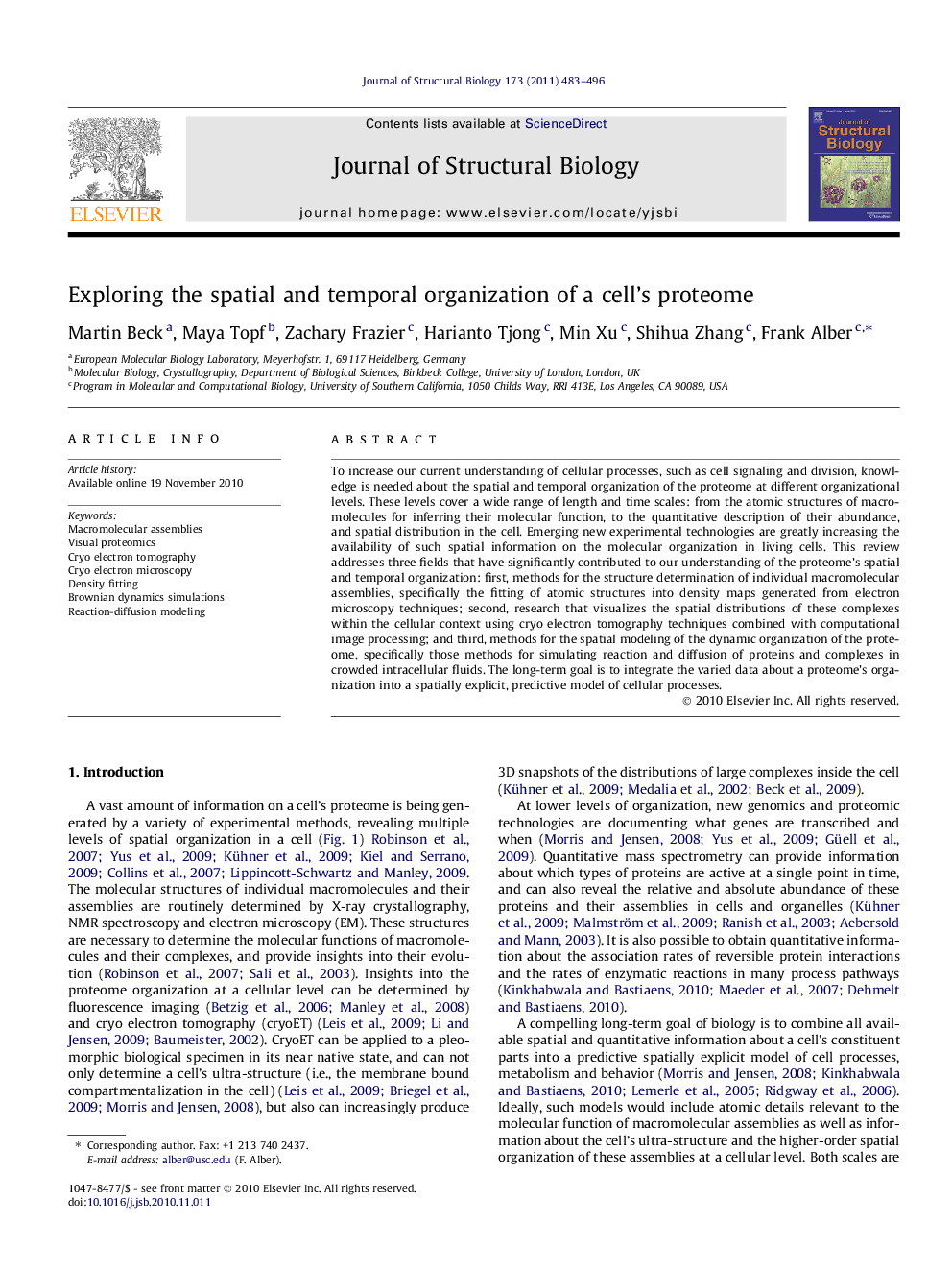| Article ID | Journal | Published Year | Pages | File Type |
|---|---|---|---|---|
| 5914828 | Journal of Structural Biology | 2011 | 14 Pages |
To increase our current understanding of cellular processes, such as cell signaling and division, knowledge is needed about the spatial and temporal organization of the proteome at different organizational levels. These levels cover a wide range of length and time scales: from the atomic structures of macromolecules for inferring their molecular function, to the quantitative description of their abundance, and spatial distribution in the cell. Emerging new experimental technologies are greatly increasing the availability of such spatial information on the molecular organization in living cells. This review addresses three fields that have significantly contributed to our understanding of the proteome's spatial and temporal organization: first, methods for the structure determination of individual macromolecular assemblies, specifically the fitting of atomic structures into density maps generated from electron microscopy techniques; second, research that visualizes the spatial distributions of these complexes within the cellular context using cryo electron tomography techniques combined with computational image processing; and third, methods for the spatial modeling of the dynamic organization of the proteome, specifically those methods for simulating reaction and diffusion of proteins and complexes in crowded intracellular fluids. The long-term goal is to integrate the varied data about a proteome's organization into a spatially explicit, predictive model of cellular processes.
